
Get the Flash Player to see this player.
As the cruiser market grew along with the rest of the industry at near exponential rates over the last 15 years, so did displacement and the performance level of some cruisers. Now theres an unofficial subset of this segment where the words muscle, power or performance may be used along side the word cruiser.Sure, performance cruisers still have most of that essential cruiser profile. But a lot of them also stop well, are agile, powerful enough, and comfortable enough to catch the eye of a consumer that may be considering an altogether different style of bike.
Witness Suzukis latest introduction, the Boulevard M90. During the bikes U.S. launch this past fall in Monterey, CA, Mel Harris, vice president of American Suzuki Motor Corporation, says the M90 fills a gap that existed not only in Suzukis own product line, but also in the market.
So this got us to thinking. Is it possible this friendly bruiser can hold its own against a veteran of the class? The other party in this showdown is the venerable Warrior from Star Motorcycles. Entering its eighth year of production, the Warrior is a standard setter. The successful combination of comfort, style and performance is undeniable, and for its many admirable traits it won our 2007 Power Cruisers Shootout.
After eight happy years the Warrior is about to come under attack from a lesser-powered combatant, a combatant that has a strong race heritage in its big family tree. Will the Warrior finally lose favor with the cruiser masses? Lets find out!
2009 Star Warrior $13,190 ($13,390 Onyx)
View Specs
The Star Warrior is a founding member of the current generation of muscle bikes. Birthed in 2002 under the Yamaha banner, the Warrior we know today started life as a hot-rodded Road Star. It's been updated here and there over the past few years but has remained largely unchanged. There's no shame in staying the same for so long, especially considering the Warrior was the basis for five AMA ProStar Hot Rod Cruiser championships; the class was retired in 2006.
What really establishes the Warrior as unique among not only the cruiser crowd-at-large, but also among this narrower scope of power rides is its aluminum double-cradle frame and swingarm. Carried in that stiff but weight-saving frame is one helluva 1,670cc (102ci) V-Twin. It may be pushrod and air-cooled, but its potent!
After the first 20 or so miles switching between the Warrior and M90, guest tester and author of Riding Man, Mark Gardiner, made a sharp observation: The two motors illustrate the fact that these bikes are a study in contrast. However, Mark also quipped that theres still no replacement for displacement, a long-held tenet of gearheads the world over.
| Engine | |
| 1670cc (102ci) 48-degree, fuel-injected, air-cooled, OHV pushrod, 4-valve-per-cylinder, 5-speed with belt final drive; cable-actuated wet multi-plate clutch | |
| 97 x 113mm bore and stroke with 8.36:1 compression ratio | |
| Twin-bore dual 40mm throttle bodies | |
| Claimed horsepower and torque: 83.1 hp at 4400 rpm and 99.6 ft-lbs at 3750 rpm; measured rear wheel horsepower and torque courtesy of AreaP/NoLimits: 74.8 at 4500 rpm and 94.3 at 3700 rpm | |
Dont be quick to dismiss the Warriors seemingly dated engine architecture like I did before seeing the dyno charts. Star endowed the Vee with large cooling fins, ceramic composite cylinder bore plating and a one-piece head cover for efficient heat dissipation. Knowing this and seeing nearly 95 ft-lbs on the dyno helped dispel the myth that a modern air-cooled pushrod engine will suffer the same power-scavenging losses from heat like V-Twins once did.
A little over 200cc in the Warriors favor doesnt seem like it would necessarily serve the Suzuki a crushing blow. However, the advantage is clear if we factor in the Warriors longer stroke. An extra 5 horsepower is decent, but the nearly 12 ft-lbs more establishes the Warrior as the clear winner in the engine department. That is, if youre just going by the numbers.
Power delivery is V-Twin classic: torquey and linear. Trouble-free fueling is aided by two spark plugs per cylinder. With so much pulling power, lumbering along the avenue in fifth gear as low as 1,000 rpm is possible. The bike accelerates with authority even when in top gear at higher rpms. Not quite so characteristic of a Vee is how relatively vibe-free the Warriors engine is. However, the notchy tranny made finding neutral a chore. Its the one legitimate sore spot in this mill.
| Chassis, etc. | |
| Aluminum double-cradle frame and swingarm | |
| 41mm KYB male-slider fork adjustable for preload; single under-chassis Soqi shock, pre-load and rebound adjustable | |
| Dual radial-mount four-piston front brake calipers with 298mm rotors; single two-piston rear caliper with 282mm rotor | |
| Five-spoke cast aluminum wheels with 120/70 x 18 front and 200/50 x 17 rear tires | |
| Rake, trail, wheelbase: 29.2 degrees, 5.11 inches (130mm), 65.6 inches | |
| Seat height: 28.1 inches | |
| Overall height, length, width: 93.9, 44.1 and 36.8 inches | |
| Wet weight: 650 lbs | |
| Observed fuel economy of 36 mpg from 4.0 gallon fuel tank | |
| One-year limited factory warranty | |
The Warriors aluminum frame and swingarm not only help contribute to the apparent 73-pound weight savings over the M90, but also provide rigidity, the benefits of which are a stable but forgiving ride. Enhancing the Stars road manners is the reasonable 65.6-inch wheelbase (0.9 inch shorter than the Suzuki), a comparatively shallow 29.2-degree steering angle and a manageable 200mm rear tire. Although it requires some effort, the bike turns well, is predictable, and has impressive ground clearance, noted Mark.
Slowing and stopping is another strong suit of the Warrior. With a pair of radial-mount calipers, something current sportbikes have only seen for the past four or so years, the Warrior stops as well or better than any OEM cruiser available today. The brakes are excellent, with good feel, a good initial bite, and moderate lever pressurealthough Id like to see the lever adjustable for my elf-like hands, Mark said.
Ergonomically, and certainly stylistically, the Warrior doesnt fit neatly into a cruiser box. You sit on the Warrior, an impression exaggerated by the low headlight and instruments, explained Mark. Noting that sitting at a standstill the low headlight placement makes the Star strike a bad-ass pose, Mark also countered that at highway speeds, theres a fierce wind blast.
Speaking of instruments, the Warrior has a digital tachometer; the Suzuki lacks any kind of tach. Additionally, placement of the Warriors instruments puts them in plain sight. The M90s tank console-mounted indicator and warning light cluster is often difficult to see through the chin bar of a full-face helmet. The annoying result is that you often dont realize your blinker has been on for the past two and a half miles.
The Warrior, stylistically, is the most resolved and most American metric cruiser... its not trying to be a Harley-Davidson. Its doing its own thing, said Mark as he summed up Stars well-established performance cruiser.
Indeed, not many mass-produced Japanese machines have deviated from traditional cruiser styling quite like the Warrior. Nevertheless, the Warrior has a visual faux pas or two, like the charcoal canister thats mounted on the lower frame (CA models only, of course!). Or the openly routed wiring shroud between the steering stem and fuel tank. And spark plug coils mounted in plain sight near the fuel tank detract from the Warriors overall appeal, cheapening what Star designers worked so hard for.
Despite those ticks, its hard to knock this founding father of fat powerband boulevard bombers.
2009 Suzuki Boulevard M90 $9,999
View Specs
The M90 represents the next evolution of Suzukis Boulevard line, slotting in between the 805cc M50 and the 1,783cc M109R. Furthermore, its not just a re-tune of the Boulevard C90. The M90 has an all-new V-Twin set at 54 degrees (like the M109R), and is a four-valve-per-cylinder unit whereas the C90 is a 45-degree three-valve-per-cylinder engine.
Other differences include a higher compression ratio, larger twin throttle bodies, valve covers that are separate of the camshaft housing for allegedly reduced top-end mechanical noise, and a friction-reducing cylinder coating derived from GSX-R racing efforts. All these differences are meant to more closely resemble the 109s engine character.
Couple this sportier engine with equally sporty and stable handling, give it nearly identical styling as the M109R, and Suzuki has a new performance cruiser with a riders wallet in mind.
| Engine | |
| 1462cc (90ci) 54-degree fuel-injected, liquid-cooled, SOHC, 4-valve-per-cylinder, 5-speed shaft final-drive; cable-actuated wet multi-plate clutch | |
| 96 x 101mm bore and stroke with 9.5:1 compression ratio | |
| Twin 42mm throttle bodies with Suzukis Dual Throttle Valve (SDTV) | |
| Claimed horsepower and torque figures are not provided by Suzuki; Measured rear wheel horsepower and torque: 69.6 at 5100 rpm and 82.7 at 2900rpm | |
The M90 brings some higher-tech features like liquid-cooling and overhead camshafts to counter the Warriors extra 208cc. The cylinder bore difference is only 1mm, so the Stars advantage comes via a longer stroke.
The Suzuki feels revvier and slightly anemic in comparison to the Yamaha, Mark opined. Still, he could appreciate what the Suzukis engine is up against, saying that its not weak in absolute terms, just by comparison to a larger and pricier alternative.
It doesnt take long at the helm of the M90 to note its spirited mill. Peak horsepower arrives at a higher rpm than on the Warrior. This is likely a result of overhead cams and higher compression allowed by liquid-cooling. Fueling was trouble free. Also, the engine is a little more visceral, as vibration from the rubber mounted engine is easier to detect than on the Warrior. This sensation isnt necessarily a negative, but does add a little rawness to the Suzuki. Maybe you like that in bike engines; many folks do.
The Boulevard M90s five-speed gearbox is matched pretty well to its power and torque, but feels slightly tall when cruising around town if youre trying to lug third gear at low rpm. Once on the Superslab though, fifth gear feels more like an overdrive. The middleweight Twin can drone along comfortably like a touring bike, yet it still has enough power in reserve that overtaking autos isnt a crapshoot. Shifting is classic Japanese quality, albeit with a little notchiness, but its not as persnickety as the Warriors tranny. Also noteworthy: we experienced minimal jacking from the shaft final drive.
Due to its smaller displacement this new metric cruiser cant quite hang with the Warrior in a head-to-head power battle. But how disappointed could you be with almost 70 horsepower and over 80 ft-lbs of torque?
| Chassis, etc. | |
| Steel double-cradle frame and shaft drive swingarm | |
| 43mm KYB male-slider non-adjustable fork; single under-chassis KYB shock pre-load adjustable | |
| Dual Tokico two-piston sliding-pin front brake calipers with 290mm rotors; single-piston sliding-pin rear caliper with 275mm rotor | |
| Cast aluminum wheels with 120/70 x 18 front and 200/50 x 17 rear tires | |
| Rake, trail, wheelbase: 32 degrees, 5.08 inches (129mm), 66.5 inches | |
| Seat height: 28.2 inches | |
| Overall height, length, width: 94.1, 43.3 and 34.3 inches | |
| Curb weight: 723 lbs | |
| Observed fuel economy of 40 mpg from 4.8 gallon fuel tank | |
| One-year warranty | |
The M90 cant tout a lightweight aluminum frame and swingarm, but its ride is stable and precise nonetheless. Additionally, the Suzuki shares the exact same tire dimensions as the Warrior, but it also suffers from less ground clearance than what the Warrior provides.
The sense of balance a rider gets from the M90s neutral handling is apparent within the first few miles of twists in the tarmac. Turn in effort is minimal for a bike in this category, but when it comes to parking lot speeds and U-turns the Warrior obliges ever so slightly more easily. Drag-style bars with a moderate bend put the rider in corner-attack mode on the M90 but not at the cost of being in a stretched-out maneuver-limiting position.
Ride quality from the front suspension is forgiving, yet not so soft that it numbs feedback from the road, or that steering input is lost in translation between the bars and tire. The M90 emulates the hardtail look pretty well thanks to the hidden preload-adjustable shock, but it also more closely resembles a hardtails ride. The M90s ride out back isnt as supple as the Warriors despite having the same 4.3 inches of rear suspension travel as the Warrior.
At first thought, the M90s steel frame mightve indicated a performance deficit to the Warriors all-aluminum chassis, but that wasnt necessarily the final impression. Likewise, the M90s basic two-piston sliding-pin brake calipers shouldnt come anywhere near the Warriors radial-mount units. Surprise! Those sliding-pin jobs work pretty darn well. They provide more than enough power, but not the degree of sensitivity or ultimately as much force as the Warriors binders.
The M90 has Suzukis typical organic feel. You sit more in this bike, and theres noticeably better wind protection, Mark said. This sensation is interesting because the M90s seat height is 0.1 inch taller (woo woo, big deal, we know). But it also echoes Marks earlier comment that this is as much an exercise in contrast as it is in comparison.
Both motorcycles have large fuel tanks, but the M90s tank seems more bulbous compared to the Warriors. No doubt the smooth round line of the tank is highlighted and complemented by the same bubbly shapes found in the front and rear fender as well as the headlight shroud. The M90, in contrast to the Warrior, looks very anime with its brightly colored bodywork, and theres lots of reflecting surfaces everywhere.
On a bright note (pun intended) both motorcycles have attention-getting L.E.D taillights.
Summary
We know that looks mean a lot in the cruiser segment of the two-wheeled world, but put that highly subjective issue aside for a moment.
Next to styling, the big concern in most American riders minds is engine size and the numbers engines can produce. If youre a spec-sheet jockey, the Warrior is, as it obviously should be, the leader. In this day and age of 2000cc engines, a 200cc difference between powerplants shouldnt be much more than a blip on the radar of rider insecurities. But the dyno says the Stars additional 200cc matter. All the more impressive for the Warrior is that it can get those extra 5 hp and 12 ft-lbs from a modern air-cooled pushrod engine.
Still, the dyno tells only part of the tale. Sure, we figured the Warrior probably made more power than the Suzuki, but it wasnt glaringly obvious to us while riding that one bike was immensely more potent than the other. We couldnt really be certain of the Warriors advantage until we saw the scientific results. If two riders like us that have wide frames of reference couldnt feel a vastly superior advantage in power, how much less then will the beginning or average rider be able to perceive the differences?
Along the trip we also determined that the M90 comes dangerously close to, if not directly in some aspects, matching the Warriors handling, braking performance and ergos.
Hopefully it became clear to you that Suzuki has made a competent and comparable bike to the Warrior. Furthermore, whether by sacrificing profit margin or through greater production volume or whatever else, Zook brought the Boulevard M90 to market at a substantial savings to the consumer. The Warriors styling is undeniable, and theres a robust support system for this bike in the aftermarket. But is it really $3,200 more powerful, better handling or sexier than the Suzuki?
Of course, theres always another opinion. Mark?
As they used to say in ancient Rome, De gustibus non est disputandum. I feel that the styling and fit and finish of the Midnight Warrior reflect its premium price in the metric/muscle cruiser category. I found myself really enjoying little rides down to Starbucks or the library. However, another person might compare the two bikes and be drawn to the Suzuki.
I feel that the performance of the Warrior, both in low-rpm cruising applications and when ridden in a more sporting manner, justifies its higher price. I see it as the choice for riders with more experience and bigger budgets. The M90 is a great value and probably more appealing to the novice. Mark Gardiner
Related Reading
2009 Suzuki Boulevard M90 Review
2007 Power Cruisers Shootout
2009 Honda VTX1300T Review
Godzilla Cruisers Shootout

Motorcycle.com presents an unrivaled combination of bike reviews and news written by industry experts
More by Motorcycle.com Staff
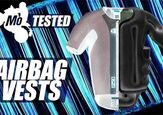


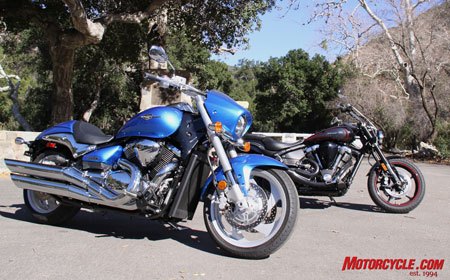















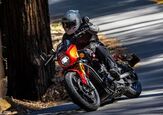
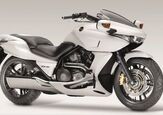
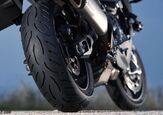
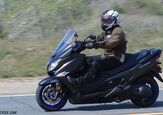
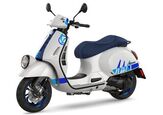
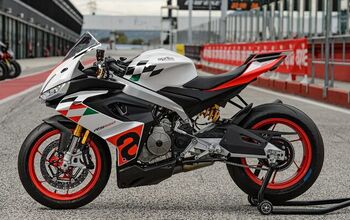
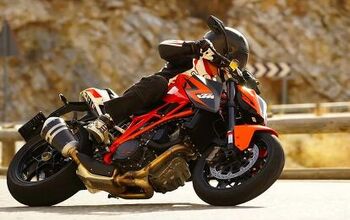
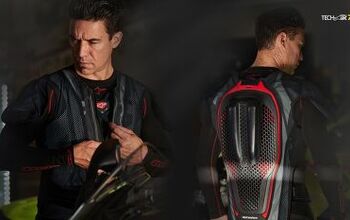
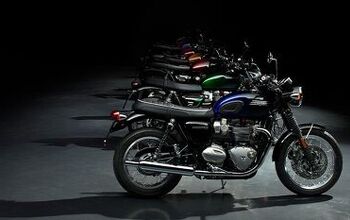
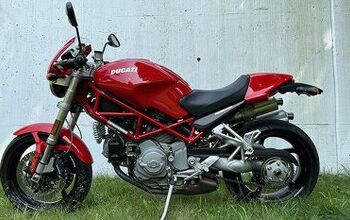
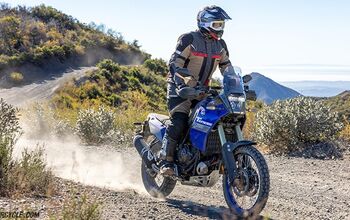
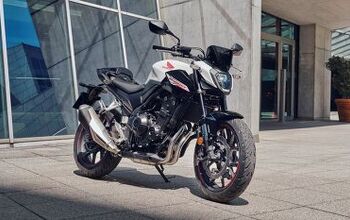
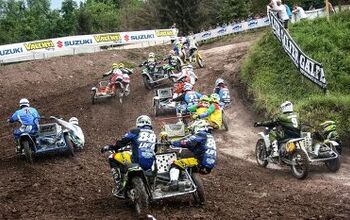

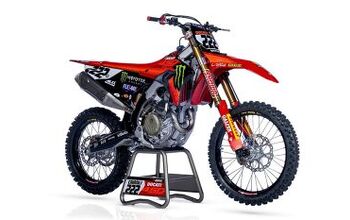
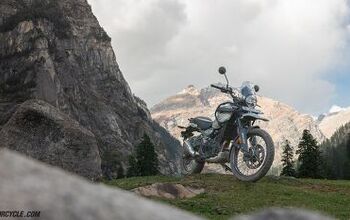
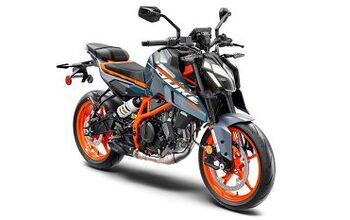
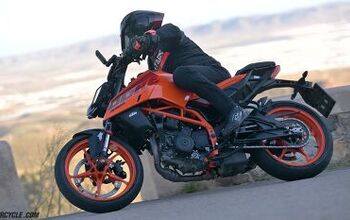
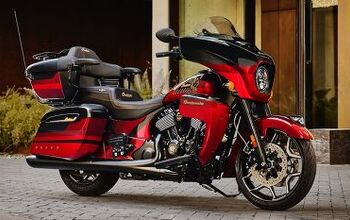
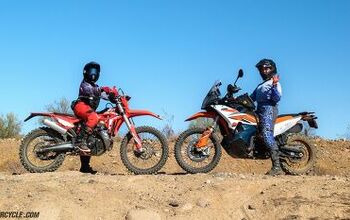
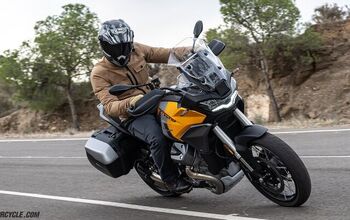
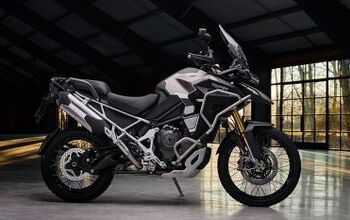
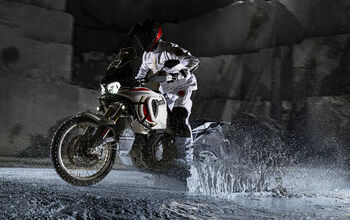
Comments
Join the conversation